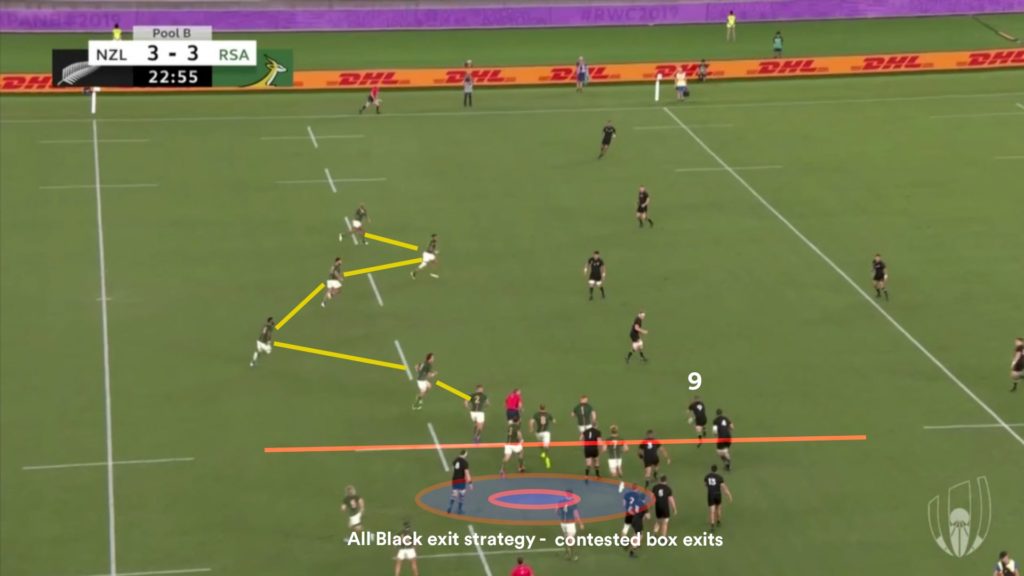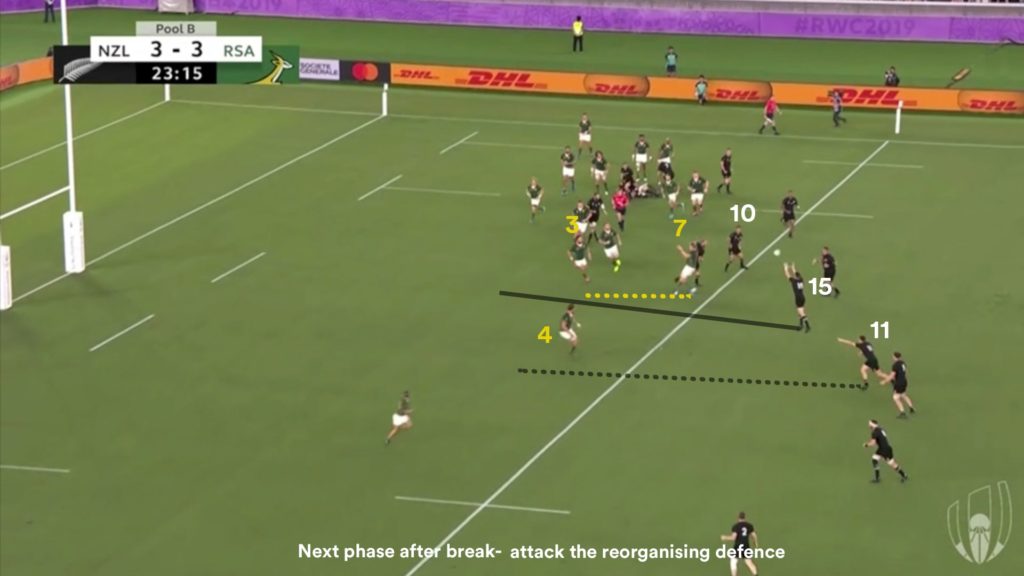Of all the losing teams to trouble the Springboks the most at last year’s Rugby World Cup in Japan, Warren Gatland’s Wales side had the best formula.
Over the preceding World Cup cycle, Wales were undefeated against the Springboks under Gatland’s guidance with four straight wins.
In their 2019 semi-final clash, Wales knew where the weaknesses were and went for them, resulting in a slow game but a close one, with only a penalty goal minutes from time separating the two sides.
This does bode well for the Lions on next year’s tour of South Africa if Gatland uses a similar blueprint but stocked with all the resources of the home nations.
Gatland will have the cattle along with the know-how to pull off a series win. There are no guarantees of course, but it should result in a thrilling contest that delivers on its potential.
English players will likely dominate the Lions starting team; however, a different approach must be taken than the one used in the ultimate game of the World Cup.
England’s single biggest failure of their final was not testing the Springboks in the air. It was where South Africa had struggled the most throughout the entire tournament.
Whether it was the humidity or sweat, Willie le Roux, Faf de Klerk, Handre Pollard and Duane Vermeulen all struggled with handling issues in the backfield.
The drop rate under pressure was rather high outside of Cheslin Kolbe, who proved to be their best under the high ball.
England failed to contest a single kick in the first half of the World Cup final.
Ben Youngs’ box kicks often went too deep while George Ford’s long kicking was nothing short of errant and ill-thought.
Unintentionally, one of these overcooked box kicks by Youngs fatefully led to Kyle Sinckler’s concussion, which then played a significant role at scrum time.
In the second half, a deep uncontested Youngs box kick led to Makazole Mapimpi’s historic try on the next phase.
There are many moments of key momentum swings that can be traced back to uncontested kicks that just gave the Springboks easy possession to run back and set up play and dictate terms.
When Youngs did get his box kick landing in a contestable zone, it paid dividends for England.
On England’s sixth exit kick, which still went uncontested but was in the vicinity of traffic, Handre Pollard coughed up possession that led to an accidental offside penalty.
The piggyback territorial swing gave England their first three points of the match. Those little moments resulted in huge momentum swings, all coming off the back of a well-placed kick.
It was through contested box kicking in the pool stages that the All Blacks manufactured broken play. The sporadic period in which they scored two tries to bury the Springboks early came from the Springboks backfield dropping the ball.


The contest zone between George Bridge (11) and Duane Vermeulen (8) naturally becomes crowded, leaving players stretched outside the tramlines.
Just five Springboks are spread across this area in the frontline, and a similar number of All Blacks. Therefore, whoever ends up with the ball on attack after the kick has a huge opportunity.

Vermuelen spills the ball and Aaron Smith (9) recovers possession. His first instinct is to link wide where the All Blacks can use their sevens-like open field situation.
They break down the right side through Sevu Reece and enter the Springboks 22.

The Springboks line is splintered, with players still trying to retreat, while also crowded around the latest ruck.
Pieter-Steph du Toit (7) makes the decision to rush out of the line and make contact with a dummy runner, which leaves his side even more vulnerable.
Pieter-Steph du Toit (7) makes the decision to rush out of the line and make contact with a dummy runner, which leaves his side even more vulnerable.

Presented with a large gap between two tight five forwards, Beauden Barrett (15) needs no second invitation, gunning for the space while runners find the lanes around him.

The All Blacks strike through George Bridge fewer than 60 seconds after a spilled box kick from Duane Vermeulen.
The impact of this contested box kick approach is two-fold, and goes some way to nullifying the wall that the Springboks have built in defence.
With a 6-2 bench split, the Springboks have almost an entire replacement pack that can come on and bring energy in defence around the middle. This reinforces their dominant defensive line that doesn’t lose steam over the 80 minutes.
The edge defence closes in and forces their opposition back inside where the big men are waiting to swallow everything up.
It goes without saying that the last thing a team wants to do is spend all their energy trying to break down this defensive line up the middle.
A smart kicking game can effectively make the Springboks’ wall redundant. You don’t go through it, you go over it time and time again.
Every time the ball is hoisted in the air, the defensive line is turned around and has to chase back, unsure whether they will be on attack or defence when the ball comes down.
If you win back possession, that defensive line is scrambling to reset and nowhere near as solid as it is when playing a predictable attacking shape.
Aerial contests by nature weaken the backfield and create disorganisation in a defensive line, creating windows of unstructured play if you win the contest.
The best way to break down the Springboks is to continually force them into aerial contests and play off the back of the windows that present when they are stacked in your favour.
Wales delivered a laborious box kick-heavy game plan in the semi-final in the hopes of creating similar opportunities. However, like England, they also failed to get enough aerial contests from their kick chase.
When they finally did, they made inroads that led to points.


This smart mid-range box kick by Davies on the edge of halftime, won by Dan Biggar, led to George North breaking free.

On the next phase after North is brought down, the Springboks defence is in disarray for Wales to attack wide left.

They can’t get organised themselves and the ball finds itself in the hands of prop Nicky Smith at first receiver and the window closes, but not before South Africa are penalised for being offside.
Wales are able to edge a little closer with the Biggar penalty goal and head to the halftime break 9-6 down.
You must have contested kicks, as they may well be the only opportunities you have to create line breaks.
The second side effect of this kicking strategy is you effectively make the Springboks lineout redundant, taking them out of the game.
It is much better to keep the ball in play and get a 50-50 aerial contest on a high ball than give them the lineout throw.
Wales knew this and so proceeded to kick the house down at Yokohama Stadium in the semi-final, keeping the ball in play as much as possible. Had Liam Williams and Gareth Anscombe been on the park, the result may have fallen a different way.
The much talked about halfback position for the Lions will surely be worn by Conor Murray, in order to generate the box kicking required in South Africa. Owen Farrell, meanwhile, is an accurate out-of-hand kicker who can place the bombs where required from flyhalf.
That places more impetus on fullbacks and wings who are experts in the air.
If Liam Williams is healthy and in-form, he can change the script for the Lions in South Africa. He will be in the first choice back three rotation, along with another fullback-cum-winger Anthony Watson.
The fleet-footed Irish star Jordan Larmour is one of the form players in Europe, but unless his aerial skills are reliable, it doesn’t matter how dangerous his running game is.
If Gatland wants to target the biggest weakness the Springboks have, whilst at the same time dismantling the defensive line and lineout, this Lions tour will be decided in the air.
If they gear selections towards that game plan, the Lions can shock the Boks.
If you’ve enjoyed this article, please share it with friends or on social media. We rely solely on new subscribers to fund high-quality journalism and appreciate you sharing this so we can continue to grow, produce more quality content and support our writers.



Comments
Join free and tell us what you really think!
Sign up for free